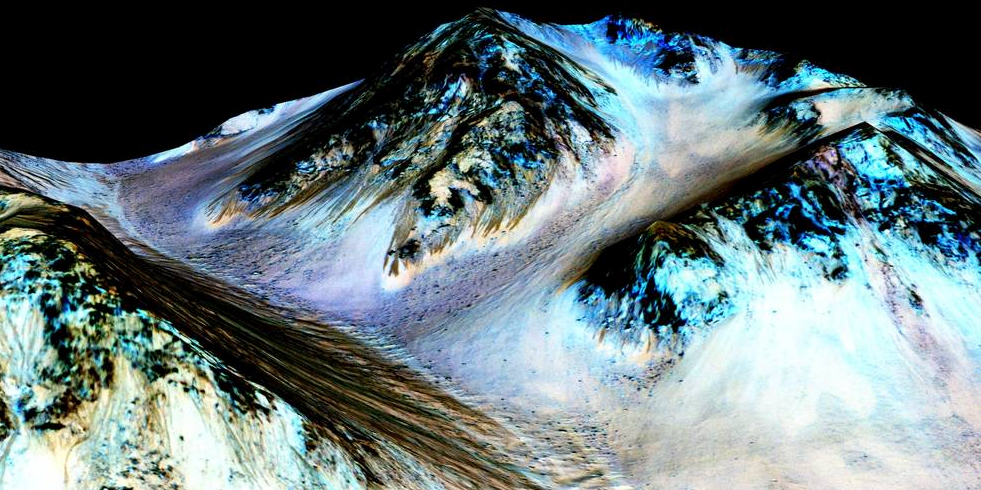Liquid water flows on today’s Mars, NASA confirms
September 28, 2015

NASA says these dark, narrow, 100 meter-long streaks called recurring slope lineae flowing downhill on Mars appear to have been formed by contemporary flowing water (credit: NASA/JPL/University of Arizona)
New findings from NASA’s Mars Reconnaissance Orbiter (MRO) provide the strongest evidence yet that liquid water flows intermittently on present-day Mars, NASA announced today.
Researchers detected darkish signatures of hydrated minerals on slopes in several locations that appear to ebb and flow over time, based on spectrometer data. The signatures darken and appear to flow down steep slopes during warm seasons, and then fade in cooler seasons.
“This is a significant development, as it appears to confirm that water — albeit briny — is flowing today on the surface of Mars,” said John Grunsfeld, astronaut and associate administrator of NASA’s Science Mission Directorate in Washington.
“We found the hydrated salts only when the seasonal features were widest, which suggests that either the dark streaks themselves or a process that forms them is the source of the hydration. In either case, the detection of hydrated salts on these slopes means that water plays a vital role in the formation of these streaks,” said Lujendra Ojha of the Georgia Institute of Technology in Atlanta, lead author of a report on these findings published Sept. 28 by Nature Geoscience.
Ojha and his co-authors interpret the spectral signatures as caused by hydrated minerals called perchlorates. On Earth, naturally produced perchlorates are concentrated in deserts, and some types of perchlorates can be used as rocket propellant.
Other co-authors are affiliated with NASA Ames Research Center, Johns Hopkins University Applied Physics Laboratory, University of Arizona Lunar and Planetary Laboratory, Southwest Research Institute, and Laboratoire de Planétologie et Géodynamique.
JPL | Animation of Site of Seasonal Flows in Hale Crater, Mars